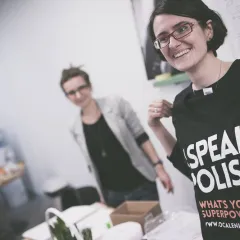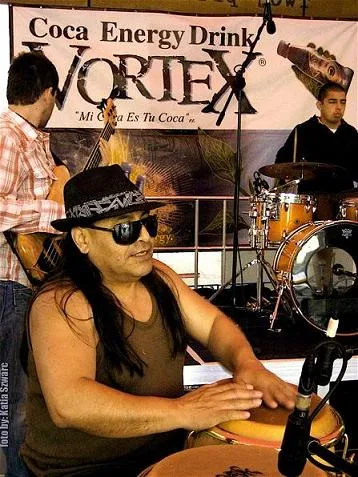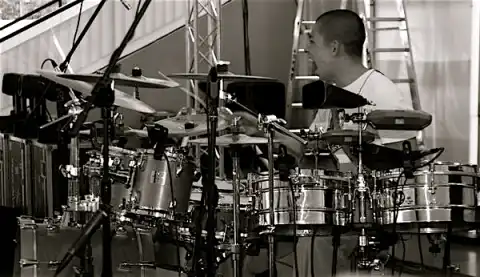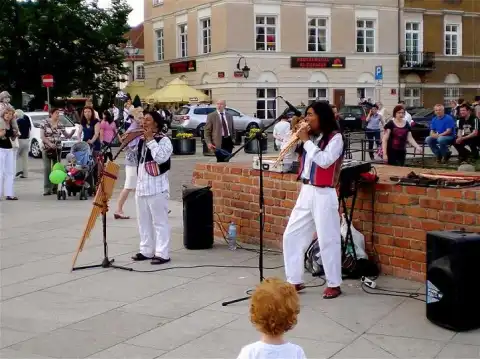What is the first thing that comes to your head when you hear the word “Peru”? One may think that the answer to this question in any corner of the Earth should usually be “Incas,” “Machu Picchu,” “llamas,” “folk bands,” and/or “pan flutes.” However, wondering around the city of Warsaw and talking to a variety of Polish people over the last two and a half years, it is not surprising anymore for me to be asked if I know who Ernest Malinowski is, or if I could help them remember the name of the President of Peru during the 90s, or even to be told with certainty that the majority of Peruvians are Catholics. Even if they also associate to Peru the stereotypical features mentioned at the beginning, is the relatively broader knowledge that Polish people have about Peru due to just a good academic formation or is there something we have not yet realized? Let us go step by step.
Incas, Machu Picchu, llamas, folk bands, and pan flutes, have all something in common: they are representative features of the Andean region of Peru. But Peru is not made out of just the Andes. The Pacific coast and the Amazon jungle also present a variety of ecosystems that makes Peru a land where diverse cultures preserve and develop their own regional lifestyles and customs. Yet, regional diversity is affected by another kind of diversity: ethnic diversity. Peru is a land of cultures not only including the indigenous one, but also people of European, African, and Asian origin, who have brought their own cultural values and mixed them up throughout the last five centuries into a growing mestizo ethnic group (around 38% of Peruvians). Even when we talk about indigenous Peruvians we are talking about mestizos, what would take us to a third kind of diversity: diversity throughout local History. The Incas were not the first to inhabit Peru but before them and during their Empire, other cultures, inhabited that part of South America. That is why not every ancestral site in Peru looks like Machu Picchu, but presents completely different constructions, techniques, designs, purposes, etc. For that reason, when talking about Peru, many Polish people not only wonder about Peru’s indigenous heritage, but also about Malinowski, of Polish origin, or about Fujimori (president during the 90s), of Japanese origin, or about Catholicism, a religion brought by the Spanish. But, the question is: how come many Poles understand this in a relatively easier way and are often able to stay away from strong stereotypes? The answer is written in any Polish History book: Poland has been a land of diversity for centuries. Thus, today, Peruvians have also been welcomed to be part of this multicultural process.:)
Poland and Peru established bilateral relations in 1923, but only since the 60s Peruvians have arrived to Poland, mainly due to scholarships. According to the Embassy of Peru in Warsaw, 428 Peruvians live in Poland today, most of who are living in Warsaw (256), Poznan (62), and Gdansk (38). At least 60% of them come from Lima, Arequipa, Trujillo and Cuzco, but have their origins in different parts of Peru. Due to the relatively small number of Peruvians in Warsaw, they usually integrate themselves easily to Polish culture, and reflect, at the same time, not just the reality of the Peruvian Andes but the one of Peru as a whole, characterized by diversity in every aspect. Today, Peruvians in Warsaw are successful TV conductors, actors, writers, musicians, physicians, professors, teachers, historians, researchers, journalists, engineers, managers, directors, cooks, entrepreneurs, students, practitioners of traditional medicine, football players, and much more, all of different ages, genres, ethnicities, religions, etc.
Given that there is no such a thing as a Peruvian look, you may be interacting with us in the daily basis without realizing you are doing so. Sunny days in the streets of Warsaw are accompanied by the mystical melodies of the pan flutes played by Andean folk musicians, while Jorge and Jhonathan Avila make our dinners more delightful with their Latino rhythms every evening at “The Mexican,” in Foksal Street. If you want to experience the sound of Latin jazz mixed with afro-Peruvian rhythms, you cannot miss the “Marita Albán Juárez Quartet,” where Marita’s vocals will make the air fresher, and renowned percussionist Manolo Albán’s drumming will offer you a mixture of Peruvian wisdom and temper. You can see the quartet’s live shows in highly regarded jazz and blues clubs in Warsaw, such as Tygmont, while they work on their first album to be released after Summer 2010. If you feel like jumping and swinging to the strength of hard rock and funk metal, fun is guaranteed by rock band Yoga Terror, in which vocalist Luis Escobedo will show you how music has become the strongest energizer.
Manolo, who has been working with the most famous Polish artists in the last ten years, has been showing some Peruvian teamwork by participating in the recording of Yoga Terror’s next album “Palace of Cultures” (EP); and in live shows with the Latino music orchestra “Coca Loca”, directed from the congas by Mirko Fernández, a famous musician and practitioner of traditional medicine, who also experiments with a mixture of ambient, trans and folk music in his side project Purga. Manolo is not the only reason for Dr. Albán, Director of Academia de Español Salamanca, to be proud of, but also is his daughter Marita. Besides being a successful Latin jazz singer, as a musicologist she has become an important member of the Narodowy Instytut Fryderyka Chopina after publishing the book “Chopin’s Poland” (2008); becoming the presenter of the documentary “Efekt Chopina,” which has called the attention of different Polish TV channels as well as of BBC World; becoming the conductor of the TV show “Chopin2010.pl,” streaming every Sunday at 08.15 am in TVP1; and being interviewed by the magazine “Zwierciadlo,” in the edition “Mocne Wejscie.” Currently, Marita is working on the Spanish edition of her first book, and on her new book “Chopin’s Europe.”
Another family that should be proud is the Dueñas family, whose son David Dueñas, at his 16, is the impressive forward of the football club MKS Mazur. Not only they became champions in 2007/2008 but in 2008/2009 David himself took the prize home as the highest scorer of the championship, with 32 goals. He proudly wears the jersey 14, number which Peruvian football star Claudio Pizarro is known for. David’s uncle, Luis Dueñas, is another Peruvian scoring high. After 12 years of working with craftsmanship and traditional Peruvian art in Poland, he has recently founded “Galeria Santusitay,” a place where people can buy Peruvian traditional products and craftsmanship.
Finally, we can answer the question stated at the beginning of this text by saying that indeed there is something we have not yet realized when it comes to the good understanding between Poles and Peruvians: that both cultures have a lot in common, especially when it comes to the diversity issue and to History.
Just like the Peruvians mentioned above, hundreds of us are working hard day after day to leave the best impression about Peru in Poland; to share our cultural values with the Polish people, with whom we are building great friendships and family ties; to contribute to Poland’s overall growth; and to keep developing, together with the Poles, the strong multicultural, tolerant, diverse, and understanding society Poland, our new home, has always been.
Luis Escobedo
Important Web Sites
Coca Loca: www.cocaloca.pl
Manolo Albán: www.myspace.com/manuelalbanjuarez
Marita Albán Juárez Quartet: www.myspace.com/maritaalbnjurez
Purga: www.myspace.com/purga.sounds
Yoga Terror: www.yogaterror.com
Academia de Español “Salamanca”: www.academia-salamanca.info
Chopin 2010.pl: www.chopin2010.tvp.pl
Embassy of Peru: www.perupol.pl
Galeria Santusitay: www.sztukaperu.com
Mirko Fernández: www.mirko.org.pl

















